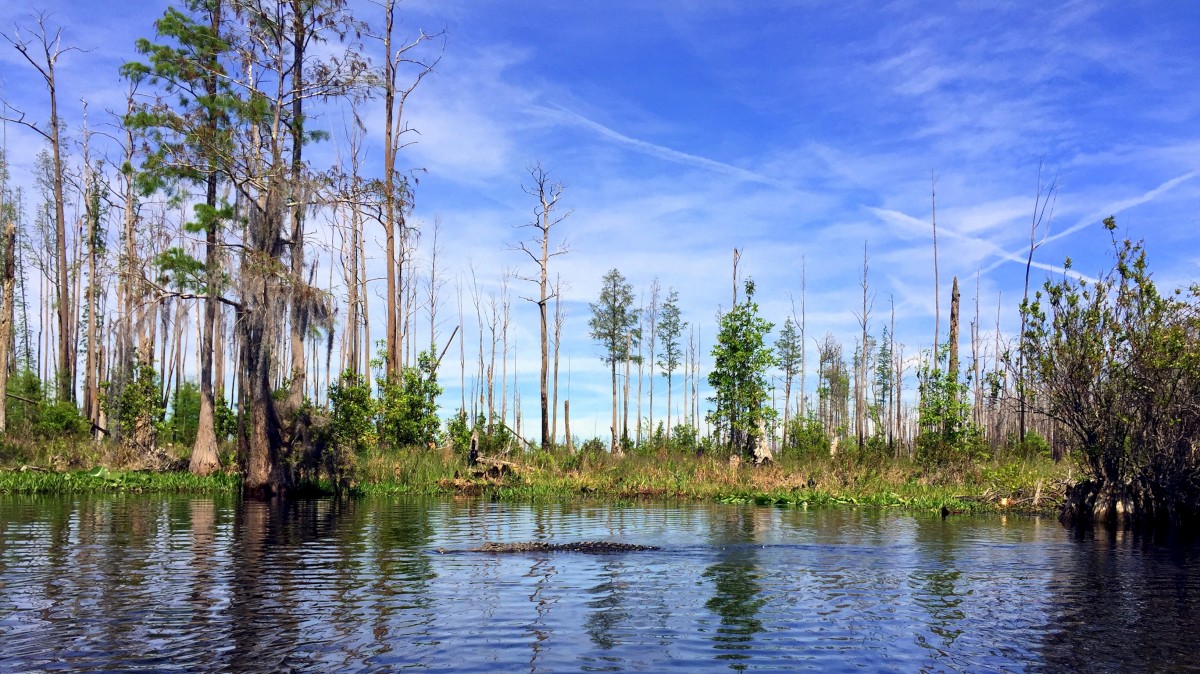
It is not the habitat of man, and has not been for many years now. The Okefenokee Swamp is a National Wildlife Refuge. (We did not lose anybody, though many a man has ventured into the swamp never to return – and we did get thoroughly lost for several hours.)

During the last half of the trip there were three of us. There were four of us in the beginning of our swamp odyssey, two men each in two flat-bottomed swamp boats pushed by 10-horsepower engines with auxiliary poles and paddles. Land of the big gator and several other endangered species of wildlife land of snake and frog and fish mosquito and deer fly and wood tick American egret and blue heron, barred owl and sandhill crane, osprey, wood duck and sandpiper land of solitude and excitement, promise and challenge, as I found by listening to the swamp’s song, from deep within, for two nights and three days with a “swamper.” One who was born and raised on Billy’s Island, and who trapped and hunted the swamp for the first 27 years of his life. The Okefenokee is several environments, all of them peacefully beautiful, yet unfriendly. More than DeSoto saw in 1538, when he found “a great morass bordered by forests and lofty trees and a dense underwood of thorns and brambles and clinging vines.”

More than “land of the trembling earth,” the English translation of the Indian name by which it is now called.

The Okefenokee is beautiful and Mysterious and wild, alluring and dangerous, captivating and hostile.


 0 kommentar(er)
0 kommentar(er)
